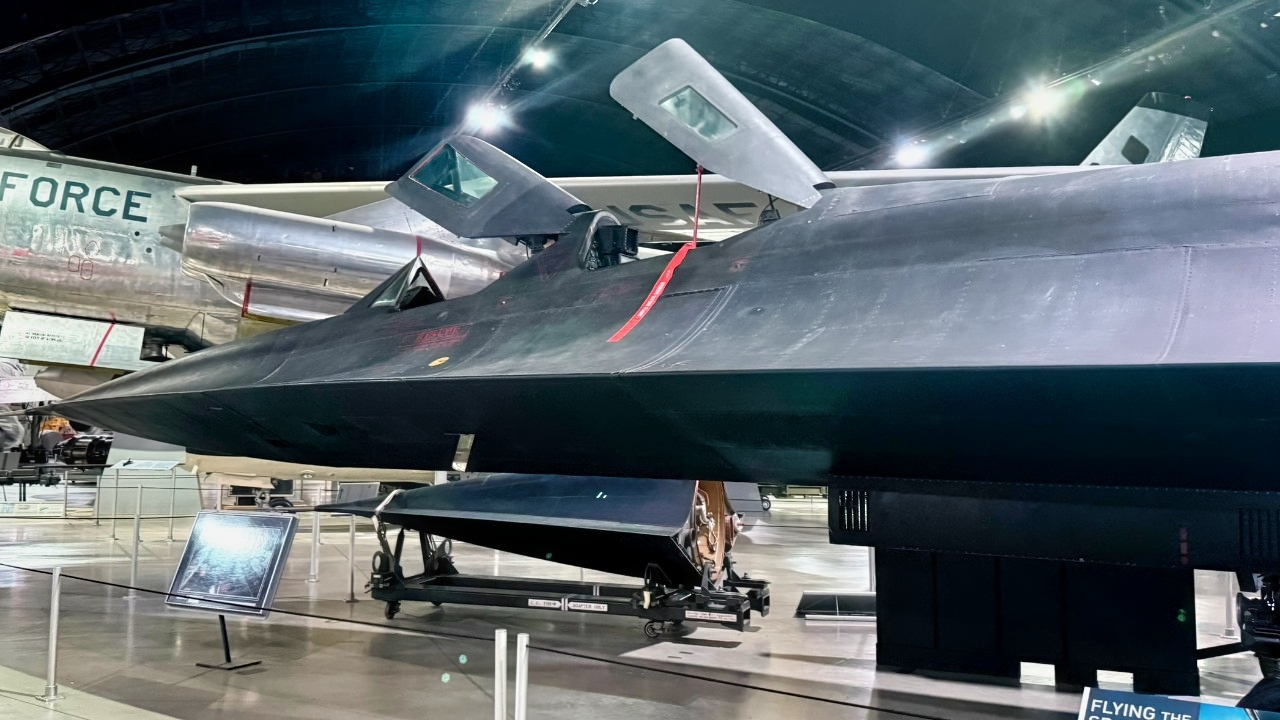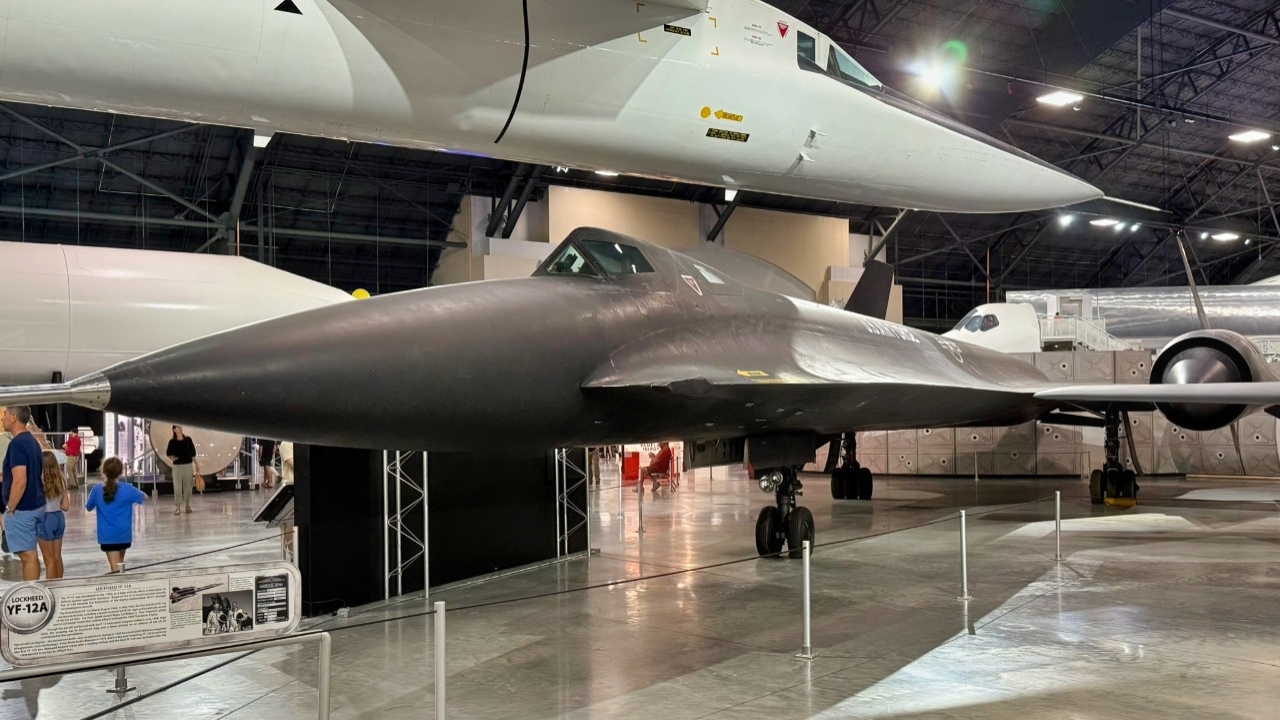Key Takeaways and Overview –Long before the SR-71 Blackbird captured global attention, its hidden forerunner, the A-12 Oxcart, operated at greater speeds and altitudes.
– Created in secrecy by the CIA at Area 51, the A-12 was a high-speed reconnaissance aircraft made from titanium obtained from the Soviet Union, engineered to be immune to air defense systems.

-The one-person Oxcart was an engineering wonder that carried out essential intelligence-gathering operations. Although it was successful, the program had an exceptionally brief duration.
It was discontinued in 1968 because of financial limitations and conflicts between agencies, handing over its responsibilities to the more renowned, twin-seater Air Force SR-71.
Discover the A-12 Oxcart: The CIA’s Hidden Mach 3 Intelligence Aircraft That Time Overlooked.
Today, the SR-71 Blackbird is recognized as the United States’ top supersonic reconnaissance aircraft. However, many are unaware that it was the A-12 Oxcart, the Blackbird’s earlier counterpart, that laid the foundation.
Developed in secret by the CIA, the Oxcart was created to replace earlier surveillance planes like the U-2. Although it had a brief operational period, the A-12’s design influenced the YF-12 prototype and theSR-71, which was operated by the Air Force.
The Central Intelligence Agency Develops a New Surveillance Aircraft
As the Soviet Union enhanced its aerial defense systems, its airspace grew increasingly challenging to access using older reconnaissance planes.
The U-2 reconnaissance aircraft had proven effective during flights over Soviet territory.
Nevertheless, its susceptibility to surface-to-air missiles became starkly evident in 1960 whenFrancis Gary Powerswas brought down within Soviet airspace. This event acted as a wake-up call for the United States and emphasized the necessity of a new spy plane capable of flying faster and higher than any current missile technology could target.
The CIA, instead of the U.S. Air Force, took charge of creating this new aircraft. The organization sought a plane capable of reaching deep into enemy territory without being seen or stopped.
Lockheed’s Skunk Works, already recognized for its creative engineering, received the contract to develop the aircraft with the code name “Oxcart.” The outcome was the A-12, a streamlined, advanced-looking jet that would go on to become one of thefastest and highest-flying aircraft ever built.
The Blackbird’s Older Brother
Creating the A-12 Oxcart involved solving numerous groundbreaking engineering problems. To reach speeds exceeding Mach 3.2 and altitudes beyond 85,000 feet, the plane needed to be made from materials capable of handling the intense heat caused by air resistance.
Standard aluminum alloys would have melted under these conditions, which is why the A-12 was constructed.primarily from titanium. Ironically, a significant portion of this titanium came from the Soviet Union, obtained through a system of shell companies to evade detection.

The plane’s engines were another example of remarkable engineering. The A-12 was equipped with twoPratt & Whitney J58 jet engines, which could function in a hybrid turbojet/ramjet mode.
At slower speeds, the engines functioned similarly to standard turbojets, but as speed increased, they shifted into a ramjet-style operation, allowing the aircraft to maintain supersonic travel for longer durations. This power system allowed the A-12 to outpace any interceptor or missile available during its era.
The Oxcart Soars into the Sky
In addition to velocity andaltitude, the A-12 included early stealth characteristics. Although not genuinely stealthy by today’s standards, the plane’s design wasintended to minimize its radar signature, and it incorporated radar-absorbing materials into its exterior. These advancements were pioneering and established the basis for subsequent stealth aircraft, including the F-117 Nighthawk and the B-2 Spirit.
The A-12 first flew in 1962, and following several years of testing and improvements, it became active in 1967 under the CIA’s“Black Shield” program. Based out of Kadena Air Base in Okinawa, Japan, theA-12Carried out surveillance operations above North Vietnam, North Korea, and other regions of importance. These operations gathered essential intelligence during a tense time in the Cold War and the Vietnam War.
The Lockheed SR-71 Blackbird and Conflicts Between Agencies
Although it had innovative features, the A-12 had a brief period of use. It was withdrawn in 1968, just as the U.S. Air Force’sSR-71 Blackbirdwas beginning its service. The SR-71, although derived from the A-12’s design, was a two-person aircraft equipped with more sophisticated sensors and a longer operational range, which made it better suited for military missions. The choice to phase out the A-12 was affected by financial limitations, conflicts between different agencies, and the intention to centralize intelligence-gathering activities under the Air Force.
Although the A-12 and SR-71 look alike, there are significant differences between them. The A-12 was a one-person plane used by the CIA, while theSR-71was a two-seater plane used by the military.
The A-12 was slightly quicker and capable of flying at a greater height, however, the SR-71 featured more advanced surveillance technology and increased operational versatility. In many aspects, the SR-71 was a more viable option for extended use, yet it was the A-12 that paved the way.
In Four Words: Lost at Speed 3?
One reason the A-12 is frequently overlooked is because the project was kept confidential from the start. The aircraft wascreated and evaluated at Area 51in Nevada, with only a limited number of government officials aware of its presence. Pilots were carefully chosen and received intense training, frequently using false identities.
The aircraft’s look and abilities remained secret for many years, and it wasn’t until the 1990s that the full details about the A-12 were released to the public. At that point, the SR-71 had already gained widespread popularity and admiration.
Although its operational period was brief, the A-12 made a significant impact. It proved that continuous flight at Mach 3 was possible, introduced stealth capabilities, and expanded the limits of aerospace technology. Several advancements created for the A-12 affected later aircraft and contributed to the United States’ technological superiority throughout the Cold War.
The A-12’s operational history, although short, was not free of excitement. At multiple times, the aircraft wasdetected and fired uponDue to enemy surface-to-air missiles, especially during operations over North Vietnam. However, its speed and altitude enabled it to avoid all dangers, and no A-12 was ever brought down in battle. That being said, the program faced several heartbreaking accidents during testing, leading to the loss of both aircraft and pilots. These losses served as a sobering reminder of the dangers inherent in advancing the boundaries of aviation.
About the Author:
Isaac Seitz, a Defense Correspondent, completed the Strategic Intelligence and National Security program at Patrick Henry College. He has also taken Russian courses at Middlebury Language Schools and has served as an intelligence analyst in the private sector.
The Top Tanks in the World
Abrams X: The Tank That the U.S. Army Desires
M1 Abrams: The Top Tank in the World?
Challenger 3: The British Army’s Latest Advanced Tank
Please follow National Security Journalon MSN for the most recent updates on defense, foreign affairs, economics, and politics with a balanced perspective.







